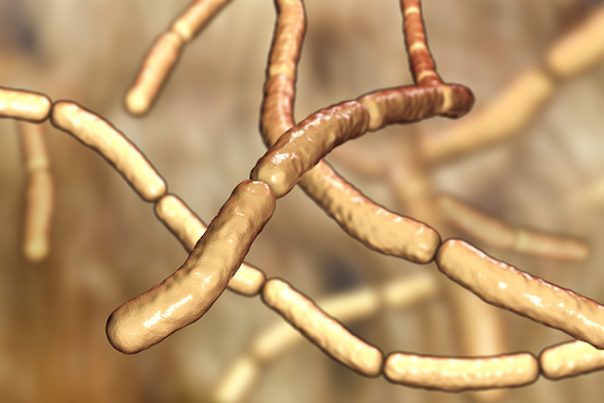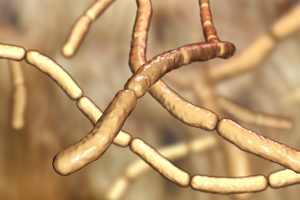
Chromoblastomycosis – causes, side effects and treatments at NaturalPedia.com
Tuesday, February 27, 2018 by Jhoanna Robinson
http://www.naturalpedia.com/chromoblastomycosis-causes-side-effects-and-treatments-at-naturalpedia-com.html

Chromoblastomycosis usually starts on the foot or leg. However, other exposed body parts may also be vulnerable, especially where the skin is broken. It is characterized by small, itchy, enlarging papules that look like ringworm. These papules form dull red, sharply demarcated patches.
Dull red or grayish cauliflower-shaped nodular projections may then appear in the center of the patches, and if the infection is left untreated, these nodular projections can cover extremities.
Since it was identified in the early 1910s, chromoblastomycosis has been frequently misused to cover other infections caused by dematiaceous fungi. The dawn of immunosuppressive therapies and diseases caused more confusion because of the identification of new agents and new clinical settings.
When the concept of phaeohyphomycosis was discovered by McGinnis in 1983, the difference among these diseases became more apparent. Chromoblastomhycosis is no longer confused with mycoses, such as mytocema or phaeohyphomycosis, which is brought about by another kind of dematiaceous fungi.

Known side effects of chromoblastomycosis
If untreated, chromoblastomycosis can cause secondary bacterial infections, resulting in ulcerations and sometimes septicemia or blood poisoning.
Body systems harmed by chromobastomycosis
Chromoblastomycosis is bad for the integumentary system. Extreme itching can be felt by someone with chromoblastomycosis.
Chromobasltomycosis is bad for the circulatory system. It can cause infection of the blood.
Food items or nutrients that may prevent chromoblastomycosis
Apple cider vinegar is a fairly common treatment for many types of fungal infection due to its antimicrobial properties. Also, its mild acidic nature deters the infection from spreading and induces a speedy recovery.
The probiotics in yogurt can also serve as a deterrent of fungi growth by its production of lactic acid, which stops the development of fungi.
Garlic is very effective in treating any kind of fungal infection as it has antibacterial and antibiotic properties that are essential in a speedy recovery.
Tea tree oil has antifungal compounds that help eradicate fungi that cause fungal infections. Plus, its antiseptic characteristics stop the spread of the infection to other body parts.
Coconut oil contains medium-chain fatty acids that function as natural fungicides that kill fungi before they can cause infections.
Tea contains tannins that act as natural fungicides that kill fungi even before they cause trouble. Tea also has astringent and antibiotic properties that alleviate the symptoms of a fungal infection such as burning sensation, skin irritation, and swelling.
Oregano oil has anti-fungal and antimicrobial properties that can help fight fungal infections.
Olives help in optimizing the immune system; therefore, having it in your diet can go a long way towards not developing fungal infections.
Turmeric’s antiseptic, antifungal, and antibiotic properties induce quick recovery and prevent the disease from reoccurring. It also boosts the immune system.
Treatments, management plans for chromoblastomycosis
Treatment of chromoblastomycosis is via the application or ingestion of antifungal medication such as itraconazole or flucytozine. Another way to treat said ailment is via surgical excision.
Fontana-Masson staining for melanin can help determine the presence of sclerotic bodies which are pathognomonic, or indicative of the disease. Sometimes, cryotherapy, or the general use of low temperatures in medical therapy, can be helpful, although the response in patients is slow.
Where to learn more
- Cure fungal infections naturally
- Study finds exposure to herbicide increases frogs’ risk of death from fungal infection
- Hospitals in New York State are witnessing a deadly drug resistant fungal infection outbreak
- It’s not just antibacterial resistance; now FUNGAL resistance labeled a huge threat to medicine
- Cancer develops from fungal infections, like Candida
Summary
Chromoblastomycosis is bad for the integumentary and circulatory systems.
Chromoblastomycosis usually starts on the foot or leg
If untreated, chromoblastomycosis can cause secondary bacterial infections, resulting in ulcerations and sometimes septicemia or blood poisoning.
Sources include:
Tagged Under: Tags: chromoblastomycosis





